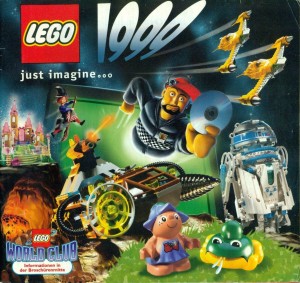 If you’re still sending catalogs like you did 10 or 15 years ago, you’re probably doing it wrong.
If you’re still sending catalogs like you did 10 or 15 years ago, you’re probably doing it wrong.
Earlier this year Penney’s reintroduced their print catalog and sales went up. They weren’t alone; retailers last year sent almost 12 billion printed catalogs.
According to Barb Pellow in What They Think, it’s become clear that online shopping doesn’t replace the need for catalogs, but in fact makes catalogs even more important.
“This holiday season, firms like Bloomingdales, Nordstrom, and Saks Fifth Avenue are sending more targeted and specialized catalogs,” Pellow writes. “Meanwhile, Williams Sonoma has transitioned its catalog into a tremendous source of valuable content with the addition of recipes.”
Pellow quotes some hard facts from a recent InfoTrends report on growth strategies that found:
- 64% of consumers regularly or almost always read catalogs
- 74% of consumers like catalogs and consider them useful tools to learn about products
- 90% of consumers use catalogs to learn and get ideas about things that interest them.
“The study also uncovered the fact that catalogs are a critical tool for moving consumers across multiple channels, including online avenues and brick & mortar retailers,” Pellow continues.
And it’s not just big box names like Penney’s. Luxury menswear retailer Ledbury uses print catalogs to seek and engage the high-end customers critical to their success.
“We started using the online channel like a lot of other brands about six years ago when there wasn’t as much as much chaos and competition,” said Ledbury CEO Paul Trible to MSNBC earlier this month. “I thought we would be able to reach the $10 to $20 million mark through good PR, word of mouth, and digital media, but now we need to go out and find new customers. Like a lot of other companies, we are discovering that catalogs are a great way to attract quality customers.”
But companies need to be aware that cataloging has changed, and a new strategy is needed to be a successful cataloger today.
“As digital channels have grown increasingly important, retailers have gone through three distinct phases in managing their catalog businesses,” notes this article in the Kurt Salmon blog. Those phases include:
- Reducing catalog mailings broadly and indiscriminately
- Using data to test new catalog formats and targeted catalog mailing reductions and redirections
- Facilitating consumers’ use of catalogs in combination with other channels
In other words, the days of the door-stop size catalog on everyone’s porch is probably gone, but smart targeting and a true omni-channel experience create a perfect environment for retailers.
“For consumers, omnichannel means having a seamless brand experience, regardless of how they’re accessing that brand. And as the data makes clear, consumers still want to access their favorite brands with a catalog in hand,” the article continues.
As we look ahead to 2016, and say goodbye to 2015 or “the year print didn’t die,” we expect to see more brands reaching out through targeted catalog mailings and getting better and better at this game, with good reason.

January 3, 2017, 8:50 am